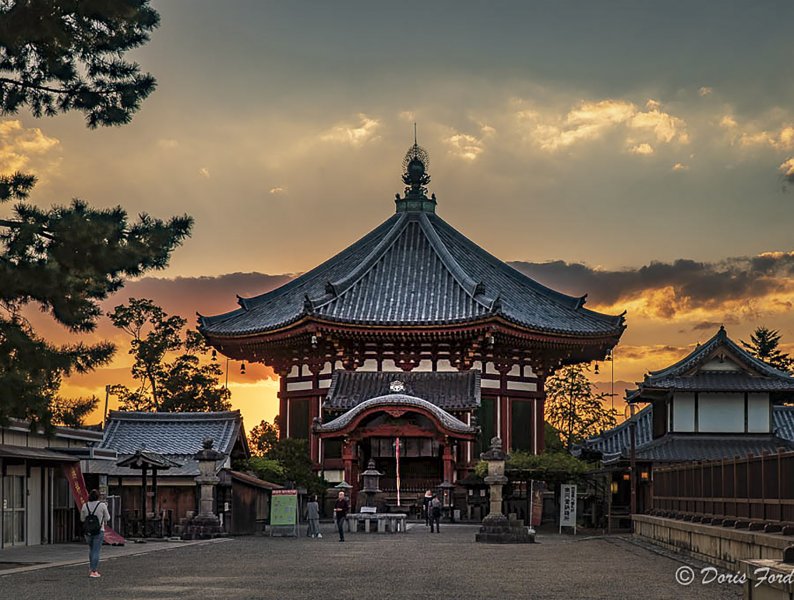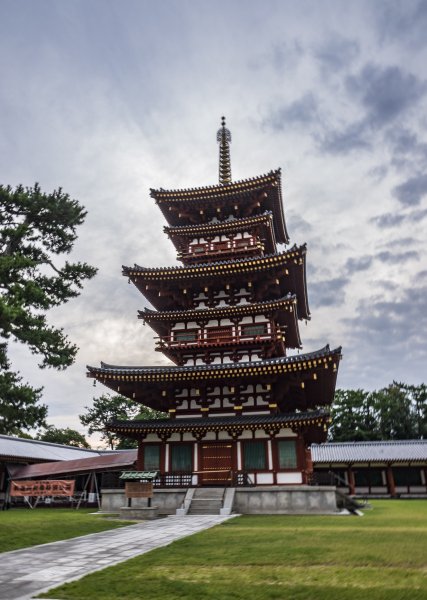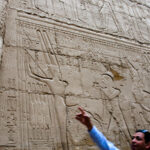Nara Japan
Nara Park (奈良公園 Nara Kōen) is a public park located in the city of Nara, Japan.. Established in 1880 it is one of the oldest parks in Japan. Nara is known for the oldest, largest and most interesting temples and the 1,200 wild sika deer (シカ or 鹿 shika) that freely roam around in the park, protected as natural treasures. The official size of the park is about 1,240 acres, the area including the grounds of Tōdai-ji, Kōfuku-ji, and Kasuga Shrine, which are either on the edge or surrounded by Nara Park, is as large as 1,600 acres.
It was during Nara’s time as the capital of Japan (710-794) that Buddhism was established as a state religion and began to spread to other parts of the country.
Nara’s temples include such world famous UNESCO World Heritage listed temples such as Kofukuji, Todaiji Kasuga Shrine and Yakushiji which will be featured in this website. Please click on the pictures for more information on the photos.
Kōfuku-ji has its origin as a temple that was established in 669 by Kagami-no-Ōkimi (鏡大君), the wife of Fujiwara no Kamatari, wishing for her husband’s recovery from illness. Its original site was in Yamashina, Yamashiro Province (present-day Kyoto). In 672, the temple was moved to Fujiwara-kyō, the first planned Japanese capital to copy the orthogonal grid pattern of Chang’an. In 710 the temple was dismantled for the second time and moved to its present location, on the east side of the newly constructed capital, Heijō-kyō, today’s Nara.
Tōdai-ji (東大寺, Eastern Great Temple)[1] is a Buddhist temple complex that was once one of the powerful Seven Great Temples, located in the city of Nara, Japan. Its Great Buddha Hall (大仏殿 Daibutsuden) houses the world’s largest bronze statue of the Buddha[2] Vairocana,[3] known in Japanese as Daibutsu (大仏). The temple also serves as the Japanese headquarters of the Kegon school of Buddhism.
Kasuga Grand Shrine (春日大社 Kasuga-taisha) is a Shinto shrine in the city of Nara, in Nara Prefecture, Japan.[1] Established in 768 CE and rebuilt several times over the centuries, it is the shrine of the Fujiwara family. The interior is famous for its many bronze lanterns, as well as the many stone lanterns that lead up the shrine
The path to Kasuga Shrine passes through Deer Park where the deer are able to roam freely and are believed to be sacred messengers of the Shinto gods that inhabit the shrine and surrounding mountainous terrain. Kasuga Shrine and the deer have been featured in several paintings and works of art of the Nambokucho Period.[2] Over three thousand stone lanterns line the way.
The original Yakushi-ji was built in Fujiwara-kyō, Japan’s capital in the Asuka period, commissioned by Emperor Tenmu in 680 to pray for recovery from illness for his consort, who succeeded him as Empress Jitō. This act of building temples in devotion to Buddhist figures was a common practice among Japanese nobility when Buddhism was first imported from China and Korea. Emperor Tenmu had died by the time Empress Jitō completed the complex around 698; and it was disassembled and moved to Nara eight years after the Imperial Court settled in what was then the new capital.

































